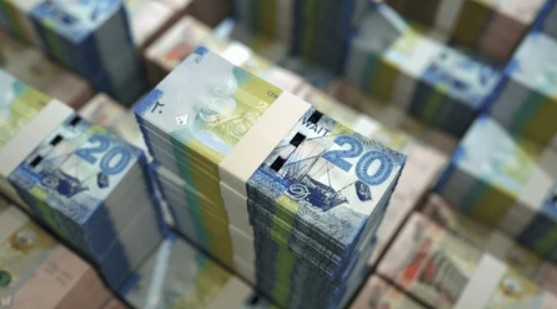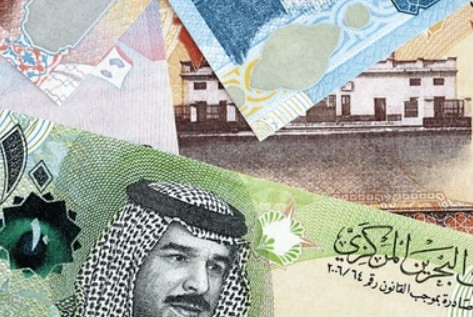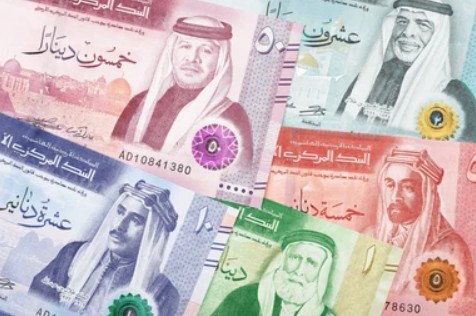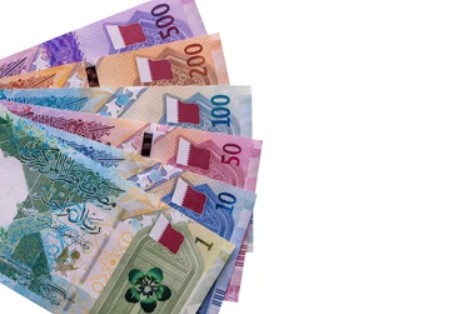Important Information
This website is managed by Ultima Markets’ international entities, and it’s important to emphasise that they are not subject to regulation by the FCA in the UK. Therefore, you must understand that you will not have the FCA’s protection when investing through this website – for example:
- You will not be guaranteed Negative Balance Protection
- You will not be protected by FCA’s leverage restrictions
- You will not have the right to settle disputes via the Financial Ombudsman Service (FOS)
- You will not be protected by Financial Services Compensation Scheme (FSCS)
- Any monies deposited will not be afforded the protection required under the FCA Client Assets Sourcebook. The level of protection for your funds will be determined by the regulations of the relevant local regulator.
Note: Ultima Markets is currently developing a dedicated website for UK clients and expects to onboard UK clients under FCA regulations in 2026.
If you would like to proceed and visit this website, you acknowledge and confirm the following:
- 1.The website is owned by Ultima Markets’ international entities and not by Ultima Markets UK Ltd, which is regulated by the FCA.
- 2.Ultima Markets Limited, or any of the Ultima Markets international entities, are neither based in the UK nor licensed by the FCA.
- 3.You are accessing the website at your own initiative and have not been solicited by Ultima Markets Limited in any way.
- 4.Investing through this website does not grant you the protections provided by the FCA.
- 5.Should you choose to invest through this website or with any of the international Ultima Markets entities, you will be subject to the rules and regulations of the relevant international regulatory authorities, not the FCA.
Ultima Markets wants to make it clear that we are duly licensed and authorised to offer the services and financial derivative products listed on our website. Individuals accessing this website and registering a trading account do so entirely of their own volition and without prior solicitation.
By confirming your decision to proceed with entering the website, you hereby affirm that this decision was solely initiated by you, and no solicitation has been made by any Ultima Markets entity.
I confirm my intention to proceed and enter this websiteAsia is home to some of the world’s most powerful currencies, driven by energy exports, trade surpluses, and stable central bank policies. Understanding which currencies are the strongest provides traders with insights into economic stability, trading opportunities, and future outlooks.
Top 10 Strongest Currencies in Asia 2025 List
These rankings are based on value against the US dollar, monetary policy stability, and investor demand.

Kuwaiti Dinar (KWD)
The Kuwaiti dinar holds the title of the strongest currency in Asia 2025, valued at around 3.25 USD per KWD. Its strength comes from Kuwait’s vast oil exports, which generate consistent trade surpluses and allow the government to build one of the largest sovereign wealth funds in the world. Low inflation and prudent fiscal management keep the dinar stable, while strong foreign reserves protect it from external shocks. For traders, the KWD is less liquid than majors but serves as a benchmark for currency strength in Asia.

Bahraini Dinar (BHD)
The Bahraini dinar remains among the most valuable currencies in Asia, trading at approximately 2.65 USD per BHD. Its stability comes from a fixed peg to the US dollar, supported by Bahrain’s oil exports and prudent monetary management. Despite its small economy, the country maintains healthy reserves that keep its currency strong. For investors and traders, the dinar’s peg ensures low volatility, making it one of the most stable currencies in the Middle East and Asia.
Omani Rial (OMR)
The Omani rial is valued near 2.60 USD per OMR, ranking as the third-strongest currency in Asia 2025. Oman’s economy is heavily reliant on oil and gas exports, and the central bank maintains strict policies to protect its currency. By keeping a controlled peg to the US dollar, the OMR avoids sharp fluctuations, giving it a reputation for reliability. For traders, this means limited speculative opportunities, but it underscores Oman’s credibility in maintaining one of Asia’s strongest currencies.

Jordanian Dinar (JOD)
The Jordanian dinar, pegged to the US dollar since 1995, is valued at around 1.41 USD per JOD. Despite Jordan not being a major oil exporter, the peg and consistent foreign aid inflows provide stability. The currency’s resilience is supported by remittances from overseas Jordanians and international financial assistance, making it one of the strongest in Asia. Traders view the JOD as less liquid than regional majors but recognize its enduring role as a stable currency in volatile times.
Singapore Dollar (SGD)
The Singapore dollar is one of Asia’s most influential currencies, worth approximately 0.76 USD per SGD. Unlike fixed pegs, the Monetary Authority of Singapore (MAS) manages the currency within a policy band against a basket of trade-weighted currencies. This unique approach has kept inflation low and the economy competitive. As a global financial hub, Singapore attracts capital inflows that reinforce the SGD’s strength. For traders, the SGD is highly liquid, actively traded, and reflects both regional and global economic sentiment.
Brunei Dollar (BND)
The Brunei dollar is valued similarly to the Singapore dollar at around 0.76 USD per BND, thanks to a long-standing Currency Interchangeability Agreement with Singapore. This allows both currencies to be used interchangeably in Brunei and Singapore. Brunei’s economy, rich in oil and gas, provides additional support to the currency’s value. While not as widely traded as the SGD, the BND is backed by strong reserves and fiscal discipline, ensuring it ranks among the strongest currencies in Asia.
Azerbaijani Manat (AZN)
The Azerbaijani manat, worth around 0.59 USD per AZN, has become one of the top currencies in Asia thanks to Azerbaijan’s oil-driven economy and de facto peg to the US dollar. The central bank keeps the exchange rate stable, typically around 1.7 AZN per USD, reducing volatility and attracting regional investor confidence. While the manat is less liquid in global markets, its relatively high unit value places it firmly on the list of Asia’s strongest currencies in 2025.
Israeli Shekel (ILS)
The Israeli new shekel, valued at approximately 0.28 USD per ILS, is backed by Israel’s diversified and tech-driven economy. Unlike pegged currencies in the Gulf, the shekel is free-floating, reflecting global demand and investor sentiment. Its strength comes from robust GDP growth, high-tech exports, and significant foreign investment. For traders, the shekel is more volatile than pegged Asian currencies but remains an important regional currency due to Israel’s role in technology and innovation.

Qatari Riyal (QAR)
The Qatari riyal trades at roughly 0.27 USD per QAR, supported by its peg to the US dollar at 3.64. Qatar’s massive liquefied natural gas (LNG) exports provide strong reserves that ensure the riyal’s peg remains credible. The currency is highly stable and plays a key role in regional trade. For traders, while speculative opportunities are limited, the QAR represents one of the strongest and most reliable currencies in Asia, underpinned by energy wealth.
United Arab Emirates Dirham (AED)
The UAE dirham, valued at around 0.27 USD per AED, is pegged to the US dollar at 3.6725. The UAE’s diversified economy spanning finance, trade, and tourism ensures the peg is supported by strong reserves. Dubai’s role as a global financial hub adds further credibility to the dirham. Traders recognize the AED as one of Asia’s most stable currencies, and it plays an increasingly important role in regional and international financial transactions.
What Are the Strongest Currencies in Asia?
Measured by exchange rate against the US dollar, Gulf currencies dominate the list. Yet, when it comes to global relevance, the Singapore Dollar (SGD) and Chinese Yuan (CNY) play a bigger role in international trade and investment, even if they are lower in unit value.
What’s Driving Currency Strength in Asia?
Several fundamental factors explain why some Asian currencies are stronger than others in 2025.
- Energy exports play a decisive role. Countries such as Kuwait, Oman, and Qatar earn substantial revenues from oil and liquefied natural gas (LNG). These inflows create consistent trade surpluses, allowing governments to build large foreign reserves. As a result, their currencies stay strong and stable against the US dollar.
- Prudent monetary policy is another key driver. Singapore, for example, manages the Singapore dollar through an exchange rate band rather than interest rates, ensuring low inflation and steady appreciation. Similarly, Israel’s central bank follows disciplined strategies that support long-term shekel stability, attracting global investors.
- Trade surpluses also strengthen currencies. When countries like China and other emerging Asian economies export more than they import, they accumulate foreign currency reserves. This surplus increases demand for their own currencies, keeping them resilient even during global uncertainty.
Finally, safe-haven demand boosts certain currencies during times of volatility. Investors often seek stable economies and currencies such as the Singapore dollar or Gulf state currencies when global risk sentiment turns negative. This capital inflow reinforces currency strength and reduces depreciation pressure.
Which Factors Could Weaken Asian Currencies?
While several Asian currencies remain strong in 2025, there are important risks that could weaken them in the months ahead.
- US Dollar strength is the most immediate threat. When the Federal Reserve raises interest rates, global investors shift capital into US assets for higher yields. This increases demand for the dollar and often pushes Asian currencies lower, especially those from emerging markets with less liquidity.
- Geopolitical risks also add volatility. Conflicts in the Middle East, territorial disputes in Asia, or trade tensions can reduce investor confidence. During such periods, capital tends to flow into safe-haven assets like the US dollar or gold, leaving regional currencies under pressure.
- Commodity swings affect energy-exporting nations. Gulf currencies such as the Kuwaiti dinar, Omani rial, and Qatari riyal are supported by oil and LNG revenues. If global energy prices fall sharply, government revenues shrink, reducing the reserves that back these strong pegs and making the currencies more vulnerable.
Debt burdens are another risk, especially for emerging Asian economies. Countries with high levels of external debt must repay in foreign currencies like the US dollar. If investor sentiment shifts or global borrowing costs rise, their local currencies can depreciate quickly under repayment pressure.
Asian Currency Outlook
The Asian currency outlook for 2025 presents a mixed picture, shaped by both global and regional forces.
- Stable and strong: Gulf currencies such as the Kuwaiti dinar (KWD), Bahraini dinar (BHD), and Omani rial (OMR) continue to rank among the strongest currencies in Asia. Their stability is anchored by oil and gas revenues, fixed exchange rate regimes, and large foreign reserves. Similarly, the Singapore dollar (SGD) benefits from prudent monetary policy and Singapore’s position as a global financial hub, keeping it resilient even when global markets are volatile.
- Emerging potential: Southeast Asian currencies, including the Thai baht (THB), Malaysian ringgit (MYR), and Vietnamese dong (VND), are gaining ground in 2025. Tourism recovery, commodity exports, and manufacturing shifts away from China have boosted demand for these currencies. While they remain more volatile than Gulf currencies, they are increasingly relevant for traders looking at regional diversification.
- Key watchpoints: The direction of Asian currencies will depend heavily on external conditions. US monetary policy, particularly the Federal Reserve’s stance on interest rates, can either strengthen or weaken Asian FX through capital flows. Global trade trends, including tariff policies and supply chain shifts, will influence export-driven economies. Energy markets are another critical driver, sharp moves in oil or LNG prices can directly affect Gulf currencies and indirectly impact regional growth.
Conclusion
Asia’s currencies in 2025 tell two stories: stability in the Gulf and Singapore, and growing potential across Southeast Asia. The Kuwaiti dinar, Bahraini dinar, and Omani rial remain the strongest by value, while the Singapore dollar reflects disciplined policy and global relevance. Meanwhile, currencies like the Thai baht and Malaysian ringgit are gaining strength as trade and tourism rebound.
For traders, these shifts create both opportunities and challenges. At Ultima Markets, our mission is to equip you with the market insights and trading tools you need to navigate changing FX landscapes. By combining education with transparent trading conditions, we help you turn knowledge about the strongest currencies in Asia into smarter strategies.
Disclaimer: This content is provided for informational purposes only and does not constitute, and should not be construed as, financial, investment, or other professional advice. No statement or opinion contained here in should be considered a recommendation by Ultima Markets or the author regarding any specific investment product, strategy, or transaction. Readers are advised not to rely solely on this material when making investment decisions and should seek independent advice where appropriate.












